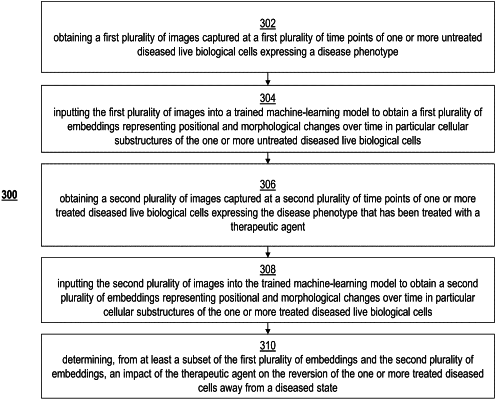| CPC G06T 7/0012 (2013.01) [A61B 5/4848 (2013.01); G01N 15/1429 (2013.01); G16H 20/00 (2018.01); G06T 2207/10064 (2013.01); G06T 2207/20036 (2013.01); G06T 2207/30024 (2013.01)] | 21 Claims |

|
1. A system for determining an impact of a therapeutic agent on diseased cells, comprising:
one or more processors;
a memory; and
one or more programs, wherein the one or more programs are stored in the memory and configured to be executed by the one or more processors, the one or more programs including instructions for:
obtaining a first plurality of images captured at a first plurality of time points of one or more untreated diseased live biological cells expressing a disease phenotype;
obtaining a second plurality of images captured at a second plurality of time points of one or more treated diseased live biological cells expressing the disease phenotype that has been treated with the therapeutic agent;
inputting the first plurality of images into a trained machine-learning model to obtain a first plurality of embedding vectors representing positional and morphological changes over time in particular cellular substructures of the one or more untreated diseased live biological cells;
inputting the second plurality of images into the trained machine-learning model to obtain a second plurality of embedding vectors representing positional and morphological changes over time in particular cellular substructures of the one or more treated diseased live biological cells; and
determining, from at least a subset of the first plurality of embedding vectors and the second plurality of embedding vectors, the impact of the therapeutic agent on a reversion of the one or more treated diseased live biological cells from a diseased state.
|